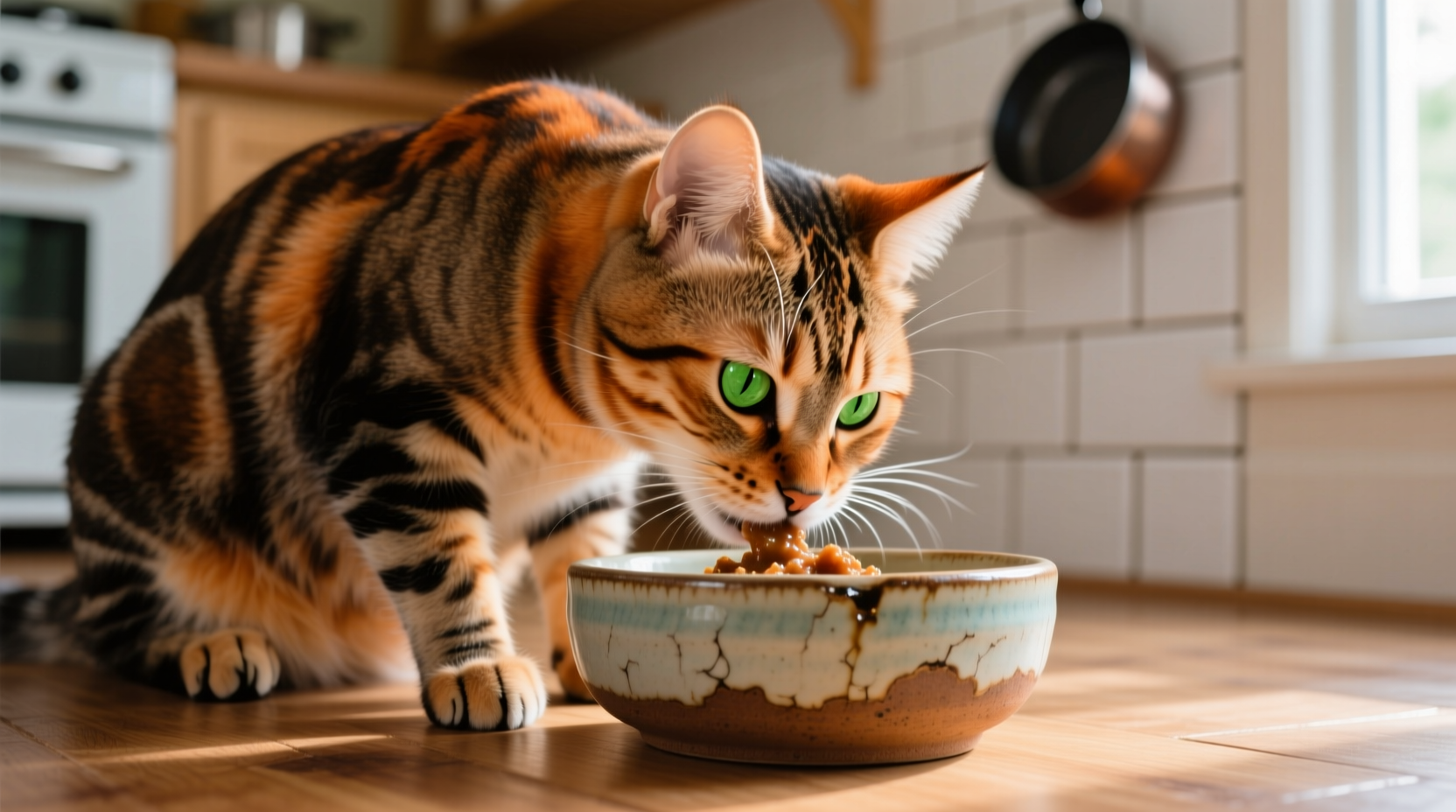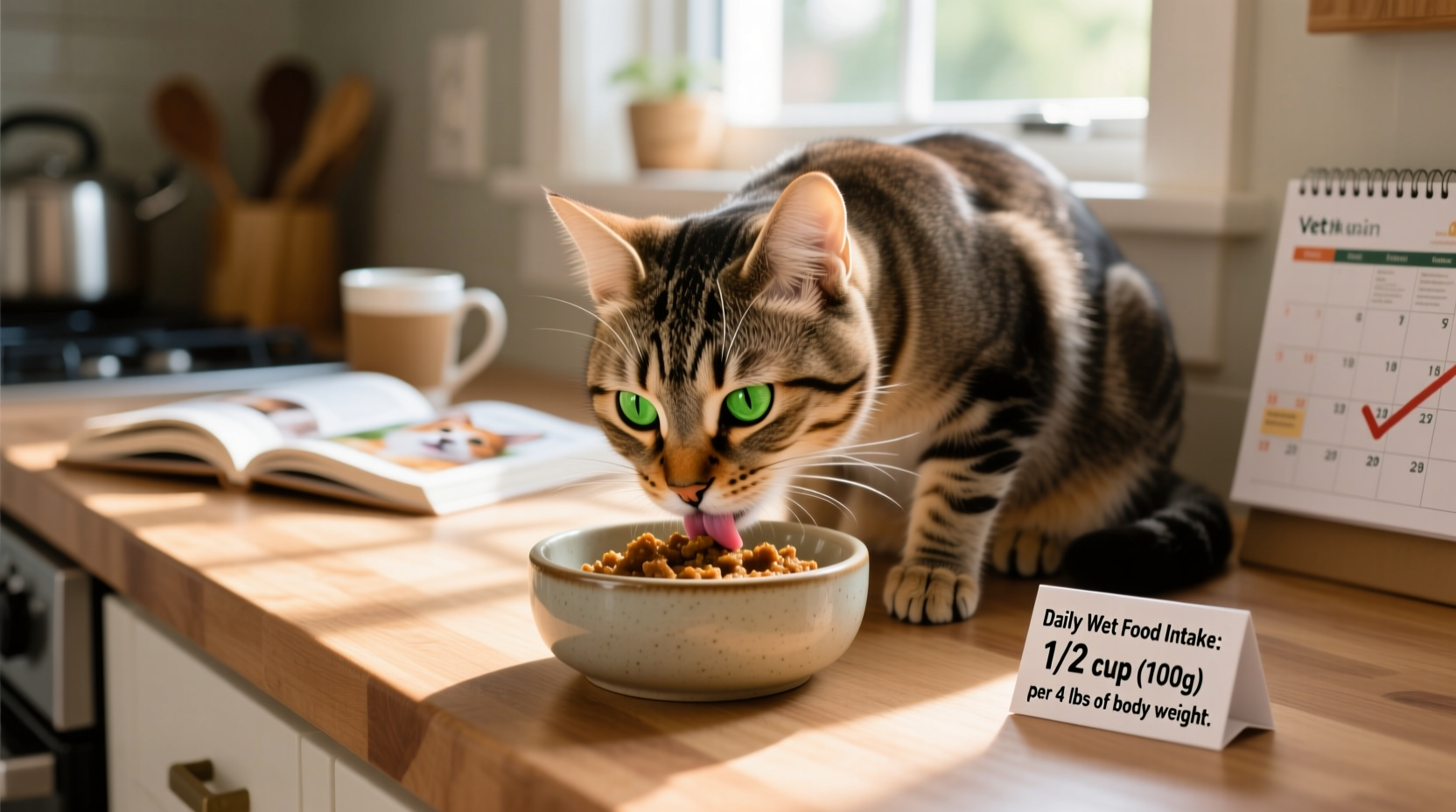Understanding proper wet food portions is critical for your cat's health. Unlike dogs or humans, cats have unique physiological needs as obligate carnivores. Their natural diet in the wild consists of small prey animals with high moisture content—around 70-75% water. Commercial wet food closely mimics this biological requirement, helping prevent common issues like urinary tract problems and chronic dehydration that frequently affect cats eating primarily dry food.
Why Moisture Content Matters for Feline Health
Cats have a notoriously low thirst drive, a trait inherited from their desert-dwelling ancestors who obtained most moisture from prey. The American Association of Feline Practitioners emphasizes that insufficient hydration contributes to approximately 30% of feline kidney and urinary issues. Wet food's 70-80% moisture content versus dry food's 5-10% makes it the superior choice for maintaining proper hydration. Cornell University's Feline Health Center confirms that cats eating exclusively dry food consume 28% less water overall than those fed wet food.
Determining Your Cat's Exact Portion Needs
While general guidelines provide a starting point, your cat's individual requirements depend on several factors:
- Body weight - Primary determinant of caloric needs
- Life stage - Kittens, adults, and seniors have different requirements
- Activity level - Indoor vs outdoor, playful vs sedentary
- Health conditions - Kidney disease, diabetes, or obesity require adjustments
- Neuter status - Spayed/neutered cats need 20-30% fewer calories
| Cat Weight (lbs) | Daily Wet Food Amount | Meal Frequency |
|---|---|---|
| 5-6 | 5.5-8 oz (1-1.5 cans) | 2 meals |
| 8-10 | 8-12 oz (1.5-2 cans) | 2-3 meals |
| 12-14 | 12-16 oz (2-3 cans) | 3 meals |
| Kittens (up to 1 year) | Double adult amount per pound | 3-4 meals |
This portion chart aligns with recommendations from the American Veterinary Medical Association's nutritional guidelines. Note that "can" sizes vary—standard single-serve cans contain 2.6-3 oz, while larger cans typically hold 5.5 oz. Always check your specific product's serving size information.

Reading Labels and Adjusting Portions
Manufacturer feeding guidelines often overestimate needs by 20-30%, according to a 2023 Journal of Feline Medicine and Surgery analysis. These recommendations typically assume an "average" cat with moderate activity, but most indoor cats are less active than the assumed standard.
When evaluating food labels:
- Look for calorie content per serving (typically 50-100 calories per 3oz can)
- Calculate your cat's daily caloric needs: 20-30 calories per pound of ideal body weight
- Adjust portions if your cat gains or loses weight unexpectedly
- Consider moisture content—premium foods may have higher protein and lower carbohydrates
Special Considerations and Context Boundaries
Standard feeding charts don't apply universally. Certain conditions require specific adjustments:
- Obese cats - Reduce portions by 10-15% while maintaining essential nutrients
- Kidney disease - Higher moisture remains crucial, but protein content may need veterinary guidance
- Diabetes - Low-carbohydrate wet foods are essential; portion timing becomes critical
- Senior cats - May need increased portions due to decreased nutrient absorption
- Pregnant/nursing cats - Require up to 3 times normal caloric intake
The American Animal Hospital Association notes that approximately 60% of house cats are overweight, often due to overfeeding. Regularly assess your cat's body condition score—your veterinarian can teach you to feel for ribs without excessive fat covering and observe a visible waistline from above.
Feeding Schedule Best Practices
Dividing daily portions into multiple meals better mimics natural hunting behavior. Cats typically eat 8-12 small meals daily in the wild. For most adult cats, two meals provide sufficient structure while preventing hunger-related behavior issues.
Recommended schedule:
- Morning feeding: 40% of daily portion
- Evening feeding: 40% of daily portion
- Night snack (optional): 20% for particularly active cats
Consistency matters—feed at the same times daily to regulate digestion and prevent begging behavior. Avoid free-feeding wet food as it spoils within 4 hours at room temperature.
Monitoring and Adjusting Your Approach
Track these indicators to ensure proper feeding:
- Weight stability - Healthy cats maintain consistent weight month-to-month
- Hydration - Skin should snap back immediately when gently pinched
- Coat condition - Shiny, not dull or flaky
- Energy levels - Active during waking hours
- Litter box habits - Well-formed stools, appropriate urine clumps
If your cat consistently leaves food, appears lethargic, or shows digestive issues, adjust portions gradually over 7-10 days. Sudden changes can cause gastrointestinal upset.
Avoiding Common Feeding Mistakes
Many cat owners unintentionally compromise their pet's health through these common errors:
- Following manufacturer guidelines without adjustment
- Mixing wet and dry food without accounting for total calories
- Ignoring treat calories (should be <10% of daily intake)
- Using improper storage methods that degrade food quality
- Not transitioning gradually when changing food types
Remember that cats don't require variety in the way humans do. Frequent food changes can cause digestive issues. The evolutionary adaptation to consistent prey sources means most cats thrive on one high-quality food rather than constant rotation.











 浙公网安备
33010002000092号
浙公网安备
33010002000092号 浙B2-20120091-4
浙B2-20120091-4